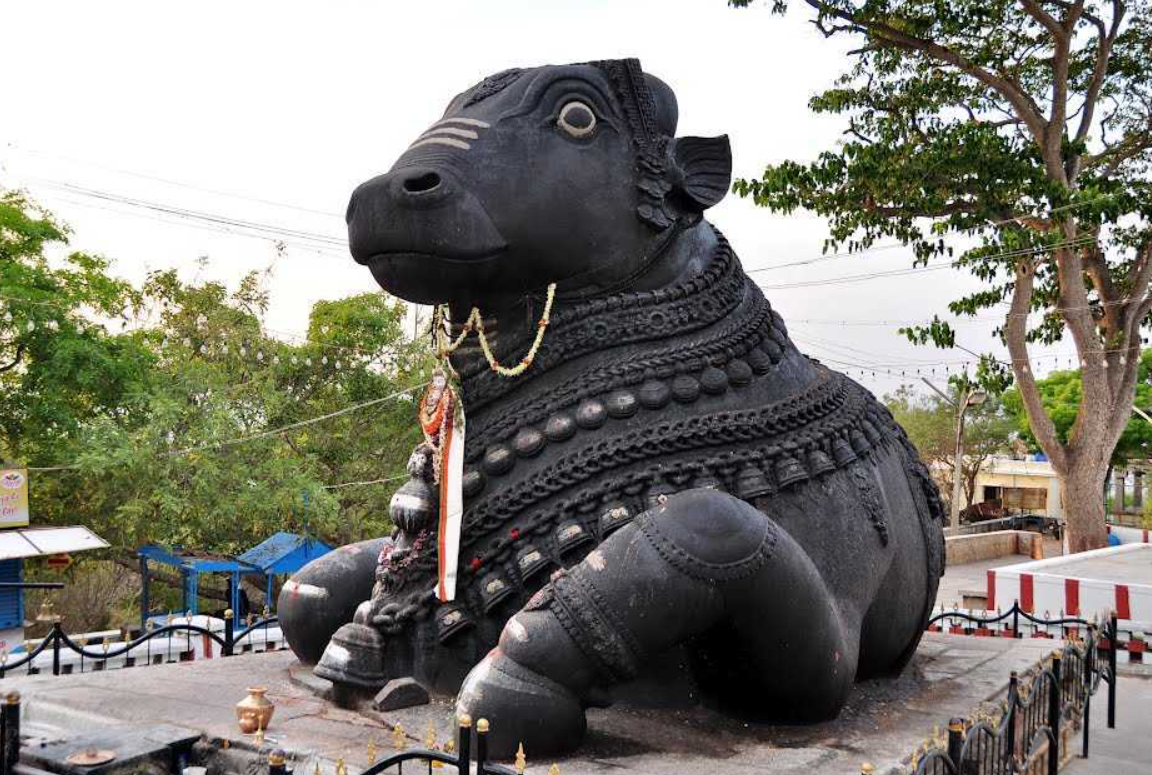The Bull Temple, also known as Dodda Basavana Gudi, is one of Bangalore’s most iconic landmarks.
Nestled in the heart of the city within Basavanagudi, an area named after the temple itself, it stands as a testament to the rich cultural and religious heritage of Karnataka.
Historical Background
Constructed in the 16th century during the rule of Kempe Gowda I, the founder of Bangalore, the Bull Temple is dedicated to Nandi, the sacred bull and the vahana (vehicle) of Lord Shiva.
The temple’s Dravidian architectural style reflects the grandeur of the Vijayanagara Empire, known for its impressive temple constructions.
The most striking feature of the Bull Temple is the massive monolithic statue of Nandi.
Carved out of a single granite rock, this statue is one of the largest of its kind in the world, measuring approximately 15 feet in height and 20 feet in length.
The statue, originally gray, has turned black over time due to the application of coconut oil and butter by devotees as part of their worship rituals.
The temple itself is a splendid example of traditional Dravidian architecture, with its intricate carvings and towering gopuram.
The main shrine houses the Nandi statue, while the surrounding area is adorned with smaller shrines and beautifully manicured gardens, creating a serene atmosphere for visitors and worshippers alike.
Religious Significance of Bull temple
The Bull Temple holds immense religious significance for Hindus, particularly devotees of Lord Shiva.
Nandi is revered as a symbol of strength, loyalty, and devotion, and worshippers believe that praying at the Bull Temple will grant them blessings and prosperity.
The temple is a vibrant center of activity during festivals, especially the Kadalekai Parishe (Groundnut Fair), held annually in November.
Kadalekai Parishe – the famous Groundnut Fair
One of the most awaited events at the Bull Temple is the Kadalekai Parishe.
This annual fair, which takes place over two days, celebrates the first groundnut crop of the season. Farmers from across Karnataka gather to offer their first harvest to Nandi as a token of gratitude.
The temple premises and the surrounding streets come alive with stalls selling groundnuts, sweets, toys, and various other items, creating a festive atmosphere that attracts thousands of visitors.
The Bull Temple is not just a religious site but also a cultural hub that showcases the rich traditions of Karnataka.
It serves as a focal point for various cultural activities and festivals that highlight the region’s heritage.
The temple’s influence extends to the local community, contributing to the area’s identity and drawing both locals and tourists.
How to reach Bull Temple Bangalore
The Bull Temple is easily accessible from different parts of Bangalore and is open to visitors throughout the year.
The serene environment, combined with the temple’s historical and architectural significance, makes it a must-visit destination for anyone interested in exploring Bangalore’s cultural and religious landscape.
The best time to visit is during the early morning or late afternoon when the temple is less crowded, allowing for a more peaceful experience.
The Bull Temple stands as a symbol of Bangalore’s rich history and spiritual heritage. Its magnificent Nandi statue, coupled with the temple’s architectural beauty, draws devotees and tourists alike.
Whether you are a devotee seeking blessings or a history enthusiast eager to explore Karnataka’s cultural treasures, the Bull Temple offers a profound and enriching experience.
You may also like: Weekend getaway from Bangalore – One day itenary towards Hosur

